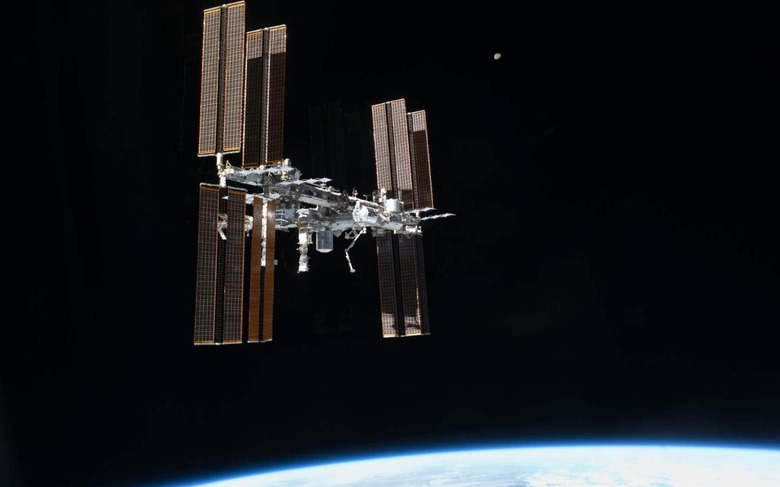SpaceX Agrees To Shift Starlink Satellites If NASA Collision Looms
Earth orbit is starting to look crowded, and so NASA and SpaceX have inked a joint agreement that should see satellites like the Starlink constellation automatically move out of the way of NASA hardware. The new policy aims to avoid collisions between fast-moving objects in space, which could prove expensive or even life-threatening in future.
It's an increasingly timely challenge, given SpaceX's rapid deployment of Starlink satellites. The company aims to blanket the planet with internet connectivity from a constellation of satellites, and has launched multiple batches in recent months. The pace of that is only likely to increase once SpaceX's Starship is deemed ready to take over launch duties.
Problem is, space may be large but the area around Earth is getting congested. "The focus of the agreement is on conjunction avoidance and launch collision avoidance between NASA spacecraft and the large constellation of SpaceX Starlink satellites," NASA said today, "as well as related rideshare missions."
NASA has the easiest part. The agreement effectively states that it will not maneuver its assets in the event of a potential crash being predicted, unless SpaceX informs it otherwise. The Starlink satellites, meanwhile, will move out of the way of any NASA science satellites or other assets. That process will be undertaken either autonomously or manually.
Each Starlink satellite is fitted with a global navigation satellite service receiver, which tracks its orbit. They can use ion propulsion systems to maneuver autonomously.
Currently, NASA assesses trajectory data both from the Space Surveillance Network that tracks objects in orbit, and a logging service operated by the US Air Force 18th Space Control Squadron, known as 18 SPCS). The space agency looks roughly one week ahead, to map out any potential close approaches that could take place, and develop a mitigation plan.
That can involve possible collision risks to the International Space Station (ISS) and any spacecraft carrying human personal, along with any non-human spaceflight missions.

"NASA will operate on the basis that the autonomous maneuvering capability of the Starlink satellites will attempt to maneuver to avoid conjunction with NASA assets, and that NASA will maintain its planned trajectory unless otherwise informed by SpaceX," the agreement states. "There may be cases, such as a launch anomaly or other on-orbit Starlink guidance, navigation and control or propulsion system anomalies, where Starlink satellites maneuvering around NASA assets may not be a feasible option and NASA assets would have to maneuver."
Part of the agreement sees SpaceX agree to choose Starlink launch injection orbits at least 5km (3.11 miles) above or below the ISS apogee or perigee. If that's not possible, NASA needs expects to be informed within one week of the altitude being selected.
Meanwhile, the agreement also appears to explore ways that SpaceX could address one of the lingering criticisms of the Starlink system: just how visible the satellites are from the ground. The glow of light reflecting off the constellation has led to widespread concern among astronomers amateur and professional, leading the private space exploration company to search for methods to make them less reflective.
The agreement with NASA includes a commitment to "share technical expertise and lessons learned to collaborate with SpaceX on developing approaches to monitoring and mitigating photometric brightness." SpaceX will, in turn, share its own analysis on the subject with NASA, so that the space agency can update its own guidance for future launches more generally.
